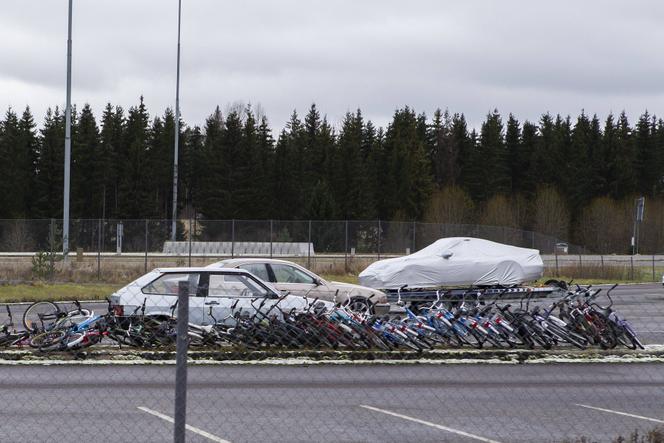


For the past few days, Finland has had its eyes firmly fixed on its eastern border. Between ten and 15 undocumented migrants typically arrive each month, but numbers have spiked. Border guards recorded 71 arrivals recently: 39 on Monday, November 13, and 35 on Tuesday, November 14, with some asylum seekers arriving by bicycle, despite a ban in force since November 9.
"While these figures remain admittedly low, the fact that this trend is rapidly changing is a cause for concern," explained Colonel Matti Pitkaniitty, head of the border guard's international affairs department. Especially as the migrants' profile has also changed: "Usually, there are Russians, but now they're coming from other countries, particularly the Middle East," said Pitkaniitty.
On Tuesday, Prime Minister Petteri Orpo, a conservative, announced that his government was taking the matter "seriously" and was prepared to "limit border traffic, close border crossing points or even round up asylum seekers in a center." Antti Häkkänen, his defense minister, was in Brussels to brief his European counterparts on the situation.
In Helsinki, the memory of the precedent set in the winter of 2015-2016 remains strong: In four months, 1,700 asylum seekers crossed the border between Russia and Finland despite a tacit agreement between the two countries dating back to the Cold War, under which each camp filters the crossings on its own side and only lets out those with valid papers. At the time, it took several months for the Finnish authorities to react, denouncing a campaign orchestrated by Moscow.
Orpo was interior minister at the time. On Tuesday, he accused Russia of once again being responsible for these new arrivals: "It is clear that these people are helped and they are also being escorted or transported to the border by border guards," he said, calling it a "conscious decision" and assuring that Finland, which shares a 1,340 kilometer-border with Russia, was ready to deal with this situation.
In February, a few weeks before its accession to NATO on April 4, the Nordic country of 5.5 million residents began building a 200-kilometer-long and three-meter-high fence designed to limit the risks of Moscow weaponizing immigration for political purposes. The lawmakers also amended the law in July 2022 to allow the government to close border crossings and group asylum seekers at specific points in the event of a large-scale attempt to enter the country.
Even before its application to become a member of the Atlantic Alliance was made official in the spring of 2022, Finland had prepared for every possible scenario. But "surprisingly, Moscow showed considerable restraint and didn't even try to derail the process," noted Matti Pesu, a researcher at the Finnish Institute of International Affairs (FIIA). He sees two explanations for this: Russia's attention was "entirely focused" on Ukraine, and the Kremlin wished to "minimize" the importance of Finland's decision.
You have 55% of this article left to read. The rest is for subscribers only.
